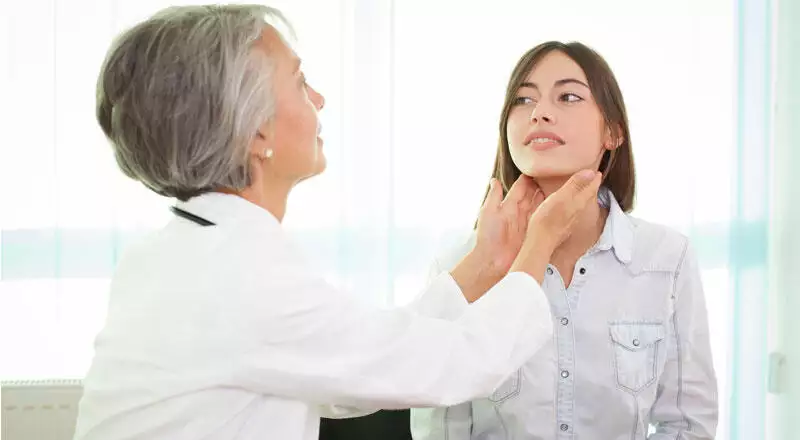 Today, U.S. News and World Report published an article about YouTube videos of teens and tweens cutting (“Teens Posting ‘Cutting’ Videos on YouTube,” February 21, 2011). Among professionals and parents alike, there remains much confusion about teen cutting and self-harm.
Today, U.S. News and World Report published an article about YouTube videos of teens and tweens cutting (“Teens Posting ‘Cutting’ Videos on YouTube,” February 21, 2011). Among professionals and parents alike, there remains much confusion about teen cutting and self-harm.
It’s a big deal, I think. Why? Because this coping behavior has been spreading. Cutting is addictive. Cutting also can be contagious. More teens than you could imagine are cutting nowadays. A report being published in Pediatrics states that between 14% and 24% of youth and young adults reported one or more incidents of self-injury. Read on to understand why teens cut and what you can do to help a teen in trouble.
Imagine a teen explaining why Sara cuts:
Sara cuts herself with razors, knives, anything sharp. Razors are best. If she doesn’t have something sharp, she’ll pick scabs or pull her hair. Did you know experts think about 10% of teens are “cutters,” hurting themselves on purpose?
Grown-ups can be really stupid about it. First, they don’t even think about teens wearing long-sleeves and pants even when it’s 90° outside. Nor do most even know about teen cutting, even though it’s becoming more popular with teens as a way to deal with stress and hard lives. Some of us get on Facebook; others cut.
I heard her mom found out and like totally freaked. She thought she was trying to commit suicide. Hello? Very few cutters want to kill themselves. For most, cutting is like you taking happy-pills, without the pills. In the brain, cutting releases endorphins and other chemicals that act just like opiates. Everybody I know who cuts says it really works. But it’s addictive, like popping pills. That’s why it’s getting more popular. Somewhere I heard it’s becoming a “social contagion” at schools and in certain communities.
Teens who hurt themselves do it to instantly relieve all those bad feelings they don’t know how to get rid of. It actually makes them happy for a little while. Really, it does the same thing as happy pills. Most cutters don’t want anybody to know, so they don’t cry for help until they’re addicted. The need to cut or hurt yourself comes when emotions are trapped for too long and a teen feels alone. Even though it seems strange, lots of time it’s the most popular and smartest people at school. I want to help Sara, but I really don’t know what to do. Maybe, if you promise not to call her parents, we could talk about how I can help her stop. It’s really sad and I get depressed every time she and I talk. I won’t turn on her like her other friends, but I really don’t know what to say. It’s almost like getting Jacob to stop drinking. Maybe you’ve had a friend who drank too much or took pills to get through their day. How did you help them?
This from the Web…Cutting Parties? You’ve Got To Be Kidding. Not!
My daughter was invited to a cutting party. While there, you make a choice whether or not to participate, she said. As I stood in the kitchen making snacks for the kids, I had to will myself to listen with an open mind. Here I was with multi-grain organic chips and soda from the health food store trying not to notice the irony.” So you don’t have to cut at a party like this?” I asked. She said there’s no pressure like that. The upsetting part is how accepted this behavior is becoming: Have something to eat, talk, cut, listen to music. I asked her if I had it right. She said I did.
-Anne, mother of tween girl
So what can you do if you know a teen who cuts, or you need to advise your teen on how to help others. Some rules of the road for parents:
- Don’t panic. Don’t get angry, yell, lecture, or punish. Don’t deny “their reality.”
- Do address the issue with calm love, support, and dialogue. Use your concern only in constructive ways and validate the teen’s feelings. Saying “what’s wrong with you” or “that’s horrible” is less than helpful.
- Much self-injury results from a feeling of helplessness or hopelessness. As such, provide a goal and a way to reach that goal. Goal: Not to cut when stressed out or depressed. Way to reach goal: Tell them, “When you feel like cutting, either choose a friend to go to instead or come to me and we’ll go do something you enjoy.”
- Be a listening friend, even if you’re a parent. Seek professional help if you believe that’s what’s needed.
- When they say they’ve stopped, don’t necessarily buy into this- it’s often an addiction. So quietly check on them and look for signs that it continues, even months or years later.
For teens to help each other:
Don’t be afraid to talk about it; just don’t be judgmental. Don’t give ultimatums, place blame, or try to shame them.
- Use “I” when talking with them, like “I really like you and am worried.”
- Know you cannot cause a friend to cut, nor can you accept responsibility for them to stop. You can be there for them, but they make their own decisions.
- Don’t promise to keep it a secret; you might need an adult in a crisis. You can promise to do what you can do to help them stop cutting or self-harming.
- Don’t force a discussion; let them choose when to talk. Let a friend who cuts know you’ll be there when they are ready.
- Think about positive statements you can make about them and what they are doing.
- Encourage them to speak to an adult, a parent, trusted teacher, counselor, or others.
- Google “helping teens who self-injure.” There are a lot of great resources out there.
Hopefully this provides more context around what you’ll be hearing about teens and self-harm. Yes, it’s scary. And yes, it’s manageable…you can make a difference.
Are there any stories or tips that you can share?





